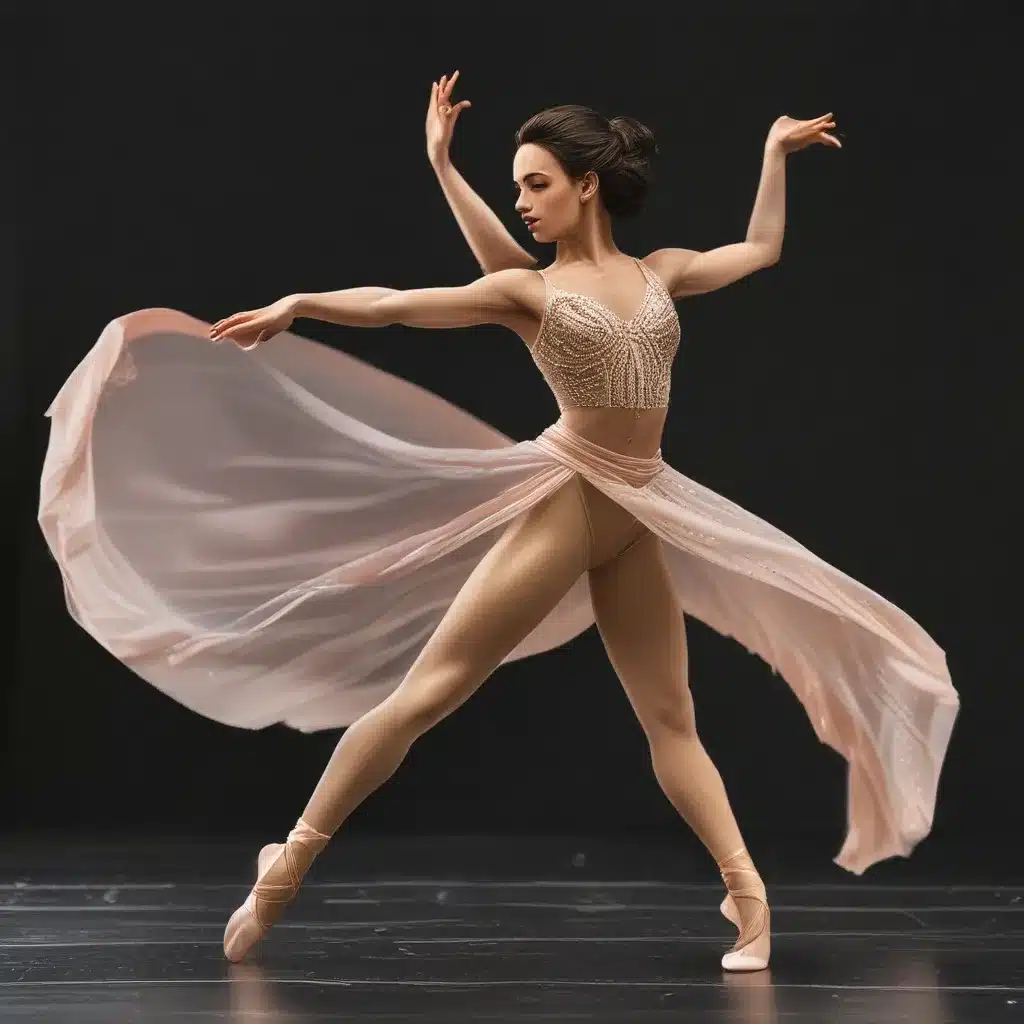
The Dancer’s Dilemma: Overcoming Insecurity on Stage
As a young dancer, I was no stranger to the crippling self-doubt that often plagues performers. Despite years of training and a deep passion for the art, I would find myself riddled with anxiety before every recital or stage production. Would I remember the choreography? What if I fell or messed up in front of everyone? And the dreaded question that haunted my every pirouette: “Do I even belong on this stage?”
I’m sure many of you reading this can relate. The life of a dancer is not all glitz and glamour – it’s a constant battle against our own inner critic. We pour our hearts into mastering complex routines, only to be plagued by self-consciousness when the spotlight hits. But I’m here to tell you that it doesn’t have to be this way.
Through my own journey of self-discovery, I’ve learned that true confidence on stage comes not from perfecting every step, but from deeply understanding and empowering our bodies. And the secret weapon in this pursuit? The Alexander Technique.
Discovering the Alexander Technique
I first stumbled upon the Alexander Technique during my time as a performing arts student. At the time, I had grown accustomed to the occasional back pain and muscle tension that came with the territory of dance. But after just a few sessions with an Alexander Technique instructor, I began to experience a profound shift.
As Damjan Rakonjac, a fellow performing arts student, eloquently described it, the Alexander Technique gave me a “comprehensive and tested method of improving my kinesthetic awareness.” I started to truly understand the intricacies of my body’s movement – where I was holding unnecessary tension, how I could optimize my alignment, and the powerful connection between mental focus and physical expression.
This newfound awareness was game-changing. Suddenly, I wasn’t just performing the steps – I was inhabiting them with a sense of ease and presence that radiated through my entire being. Gone were the days of second-guessing every turn and jump. Instead, I found myself moving with a confidence and grace that I had never experienced before.
The Empowering Benefits of the Alexander Technique
The transformative effects of the Alexander Technique extend far beyond the stage. As Jacqueline Kosecoff, a business executive, attests, this practice can “[help] me walk, sit, and exercise better” in all areas of life. By cultivating a deep understanding of our bodies’ natural alignment and movement patterns, we unlock a level of physical and mental control that empowers us to tackle any challenge with poise and self-assurance.
But the benefits don’t stop there. The Alexander Technique also has a remarkable effect on our overall well-being. Sylvia Shap, an artist, shares how this practice has helped her manage years of orthopedic issues, allowing her to “pass through them with more ease than ever before.” And for Dotti Child, a flight attendant, the Alexander Technique has been a game-changer in overcoming the physical demands of her job, enabling her to “accomplish the same tasks with less effort and no injury.”
The through-line in all of these testimonials? A profound sense of empowerment. By learning to work with our bodies instead of against them, we unlock a level of control and self-awareness that transcends the realm of dance and permeates every aspect of our lives.
Putting the Alexander Technique into Practice
So, how can you incorporate the Alexander Technique into your own dance training and performance journey? Here are a few key exercises to get you started:
-
Kinesthetic Awareness: Begin by tuning into the sensations in your body as you move. Notice where you feel tension or strain, and consciously try to release those areas. Experiment with different ways of holding your head, shoulders, and spine, and observe how these adjustments affect your overall ease of movement.
-
Alignment and Posture: Stand tall and imagine a string gently pulling the top of your head upwards, encouraging a sense of length throughout your spine. Allow your shoulders to soften and your weight to be evenly distributed through your feet. This simple practice can dramatically improve your balance, stability, and stage presence.
-
Breath Awareness: The Alexander Technique emphasizes the importance of deep, mindful breathing. As you move through your dance routines, pay close attention to the quality of your breath. Is it shallow and constricted, or deep and expansive? Experiment with opening up your rib cage and allowing your diaphragm to fully engage, and notice how this affects your physical and mental state.
-
Embodied Presence: One of the core principles of the Alexander Technique is the idea of “constructive rest” – a state of complete mental and physical relaxation that allows us to reconnect with our innate sense of poise and self-awareness. Set aside time each day to simply lie on the floor, engage in gentle stretches, and let your body fully surrender. This practice can work wonders in cultivating a profound sense of ease and confidence, both on and off the stage.
Remember, the journey of self-discovery through the Alexander Technique is a lifelong process. But with patience, dedication, and a willingness to explore the depths of your physical and mental experience, you’ll unlock a level of performative power that will leave your audience – and your inner critic – awestruck.
So, the next time you step onto that stage, I want you to remember: your body is not your enemy, but your greatest ally. Embrace it, empower it, and let it carry you to new heights of artistry and self-expression. The world is waiting to see the brilliance that lies within you.
Now, go forth and dance with the confidence of a true champion. The Musical Theater Center is behind you every step of the way.

